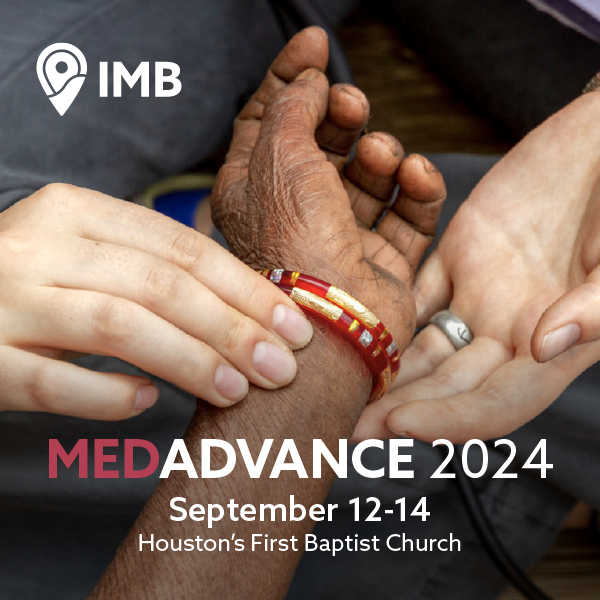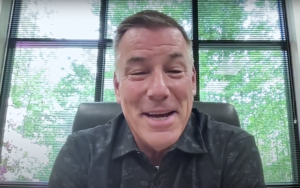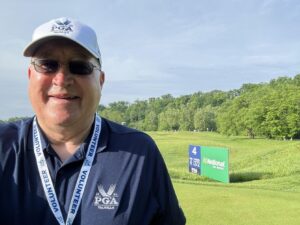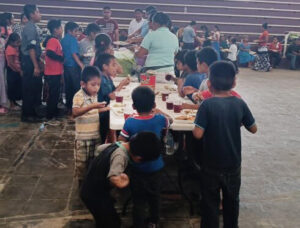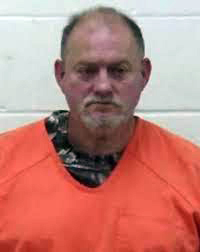
SOUTH DAYTONA, Fla. (BP)–Dennis Belz admits that it’s strange to be on the receiving end of disaster relief.
“[U]sually we’re the first ones out to assist with victims,” said Belz, director of missions of the Daytona-area Halifax Baptist Association and a 12-year veteran of disaster relief work.
With wind gusts and even sustained winds of more than 100 miles per hour, Belz said the Daytona area was caught off guard by Hurricane Charley and left in desperate need as it maintained category one hurricane status in exiting the Florida peninsula near Daytona Beach in the early morning hours Aug. 14.
Disaster relief teams from North and South Carolina arrived the evening of Aug. 16. The feeding unit from Greer, S.C., prepared its first meal at First Baptist Church, South Daytona, Aug. 17 -– supper for 4,000. The team anticipated serving 5,000 meals for lunch and supper for an indeterminate number of days until Volusia County had its power restored.
Belz told the Florida Baptist Witness that only three of his association’s 75 disaster relief volunteers were available to work by Aug. 18 because most of them were dealing with recovery from Charley at their own homes.
Betty Andrews was astounded by the assistance she received at her South Daytona home Aug. 18. The nearly 80-year-old woman and charter member of Central Baptist Church, Daytona, said, “I never thought that I would look out here and see people cleaning up my yard.” Recovery teams from North and South Carolina cleared downed trees and other debris.
Alice Jones from Pilot Baptist Church in Zebulon, N.C., was part of the team working at Andrews’ home, in which she has lived more than 50 years.
“It makes you feel good whenever you leave here and she’s such an appreciative lady; she’s so nice,” Jones told the Witness. “She just can’t believe that we’re out here doing something for her. We’re doing it in Jesus’ name.”
Ronnie Barton, pastor of South Daytona’s First Baptist Church, said his members have been “overwhelmed” with the rapid, effective response of Southern Baptist Disaster Relief volunteers.
While Florida Baptist Disaster Relief leader Fritz Wilson has spoken at the church, Barton noted that church members now are seeing the work firsthand, and it’s “going to help our church to realize that we need to get more involved in missions, we need to get more involved in disaster relief because they’re excited by what they’re seeing here.”
Leading the feeding unit at First Baptist South Daytona, Bill Haynes from Fairview Baptist Church in Greer, S.C., told the Witness he has been volunteering with disaster relief since 1996 after Hurricane Fran hit his home.
Taking vacation time from his job doing maintenance at his home church, Haynes said the 20-hour disaster relief workdays are a “really intense business” and explains why volunteer teams are rotated out after four or five days.
The Orlando area also was battered by Hurricane Charley, Bill Faulkner, executive director of missions for the Greater Orlando Baptist Association, told the Witness Aug. 18.
Faulkner said the worst damage occurred east of the Interstate 4 corridor, with areas in Kissimmee and Poinciana especially hard hit, as many parts of the region sustained wind speeds of more than 100 mph. Hundreds of thousands of central Floridians lost power in the wake of Charley, although most were expected to have it restored during the week of Aug. 23.
Describing the influx of Southern Baptist volunteers from across the southeast United States, Faulkner said, “I think it is incredible.” Even some local secular radio stations have complimented Southern Baptist Disaster Relief efforts, he noted.
“I think it says a great deal” about the Southern Baptist network of local, state and national disaster relief efforts, Faulkner added. “We’ve seen it in the last five days the way people have stepped up and been here willing to do anything necessary to get it done. It’s been exciting to be a part of it.”
Tim Wilder, pastor of First Baptist Church in Kissimmee, told the Witness Aug. 18 that his church buildings were mostly spared from damage, although its education building lost its roof cap and the preschool building roof had a large hole.
More noticeable was the loss of five or six large oak trees -– some more than 100 years old -– which the church was known for in the community. The downed trees made the parking lot inaccessible until a chainsaw team from South Carolina cleared the lots Aug. 18.
Wilder estimated that about 80 percent of his church members suffered some kind of damage to their homes from Charley, including at least two whose homes are uninhabitable. Church staff members had begun the process Aug. 18 of checking up on all First Baptist members to assess their damage and organize relief.
Although he and other church members have been “inconvenienced,” Wilder said it’s important for unbelievers to see in his members that “we didn’t lose hope.”
Calling the aftermath of Charley a “great opportunity,” Wilder added, “This is where character is shown and developed and God challenges us at times like this to step up and grow spiritually.”
–30–



